
Wyndham Hotels & Resorts (NYSE: WH), the world’s largest hotel franchising company with approximately 9,000 hotels across nearly 95 countries, and Playa Hotels & Resorts (NYSE: PLYA), a leading owner, operator and developer of all-inclusive resorts in popular vacation destination in Mexico and the Caribbean, announced today the launch of a new all-inclusive resort brand, Wyndham Alltra. The announcement marks Wyndham’s 22nd brand and its first dedicated entirely to the fast-growing, all-inclusive segment. In conjunction with the brand launch, Wyndham begins a strategic alliance with Playa Hotels & Resorts, leveraging Wyndham’s unparalleled ability to drive sales, marketing and distribution in the economy, midscale and upscale segments via its 89 million enrolled Wyndham Rewards Members and distinct Everyday Travelers, combined with Playa’s ability to provide a best in class hospitality experience and exceptional value to guests. The new brand’s name “Alltra” is born from the brand promise of “All-Inclusive Travel for All,” keeping with Wyndham’s mission of delivering exceptional experiences to the everyday traveler. Wyndham Alltra creates an all-inclusive resort experience that is distinct to the upper-midscale segment, offering upscale food and beverage, services, amenities and activities with an expressive local flavor at an exceptional value. The brand will feature both family-friendly and adults-only resorts in the Caribbean and other resort destinations. The first two resorts to debut under the Wyndham Alltra brand are Playa’s 458 room Wyndham Alltra Cancun located in the heart of the Hotel zone with its 10 upscale restaurants, bars, lounges and pools, and the 287 room Wyndham Alltra Playa del Carmen in the heart of Playa Del Carmen featuring unlimited gourmet dining just steps from Fifth Avenue with its bars, restaurants and high-end shops. Currently undergoing renovations, both resorts remain open and are scheduled to complete renovations and become Wyndham Alltra resorts in time for the holidays in December 2021. The two resorts will mark the first of many properties to be developed under the strategic alliance between Wyndham and Playa in the upper-midscale, all-inclusive resort sector in the Caribbean and Mexico that Playa currently operates in. “Wyndham Alltra will introduce many of our over 150 million annual guests to our first all-inclusive brand,” said Geoffrey A. Ballotti, president and chief executive officer of Wyndham Hotels & Resorts. “Partnering with a leading owner, operator and developer of all-inclusive resorts in prime beachfront locations, will create immediate access for our customers and our over 80 million Wyndham Rewards members to a fabulous, all-inclusive guest experience – members who will be able to redeem their Wyndham Rewards points for a new all-inclusive vacation experience at Wyndham Alltra resorts, and earn points for their stays.” “Today’s announcement combines Wyndham’s robust distribution capabilities and award-winning loyalty program with our highly acclaimed all-inclusive expertise. Together, we are launching a new experience in the upper-midscale resort segment to reach more first-time all-inclusive guests,” said Bruce Wardinski, chairman and chief executive officer, Playa Hotels & Resorts. Details about first two Playa properties to become Wyndham Alltra resorts: • Wyndham Alltra Cancun, All-Inclusive Resort – Guests can enjoy the ultimate all-inclusive vacation on Mexico’s Yucatan Peninsula with a stay at Wyndham Alltra Cancun. Situated in the heart of the lively Hotel Zone, our sprawling beachfront resort is the perfect escape for families, couples, and group gatherings. From the moment guests arrive, they’ll be transported to paradise with more than 10 incredible restaurants, bars and lounges, multiple pools, and a host of included activities ranging from yoga classes to tequila tastings. Kids of all ages will love our pirate-themed splash park, waterslides, and mini-golf course, while teens can spend afternoons and evenings in our #Hashtag hangout room. Throughout their stay, guests can keep up with their workout routine in a state-of-the-art fitness center or with one of our many group fitness classes—and be sure to make time for indulgent treatments and the complimentary hydrotherapy area at Aura Spa. Just 21 kilometers (13 miles) from Cancun International Airport (CUN), our picture-perfect resort is close to ancient Mayan ruins, lively nightlife in downtown Cancun, and so much more. Each of our contemporary suites is appointed with everything a guest needs to unwind—from fully-stocked minibars to terraces with incredible views of the Caribbean Sea. If celebrating a wedding or planning a business meeting, guests can host a memorable gathering with customizable all-inclusive packages in one of our outdoor or indoor venues. • Wyndham Alltra Playa del Carmen, Adults Only All Inclusive – Guests revel in an adults-only paradise along the idyllic Riviera Maya, steps from a breathtaking beach, fantastic shopping along 5th Avenue, and vibrant nightlife. Just 55 kilometers (34 miles) from Cancun International Airport (CUN), Wyndham Alltra Playa del Carmen, Adults Only All Inclusive offers the ultimate carefree vacation with unlimited gourmet dining and creative cocktails as well as a state-of-the-art fitness center, daily activities like beachfront yoga and aqua aerobics, and nightly entertainment. Guests can take a dip in the sparkling Olympic-size pool overlooking the Caribbean Sea, enjoy a leisurely stroll along the warm white sand, or get pampered at the full-service spa and salon. After a day of sunning, shopping, or sightseeing, guests will love retreating to one of our 287 non-smoking rooms and suites, featuring a balcony or terrace for savoring the sunset and thoughtful conveniences like a fully stocked minibar, complimentary bath products, and free WiFi. If guests want to book an excursion to Cozumel or snag a table at the hottest club, our friendly, multilingual staff are always on standby to ensure they have the vacation they’ve been dreaming about. Wyndham Alltra is designed to make it easier for the everyday traveler to find truly outstanding all-inclusive hotel experiences outside of the current upscale and luxury options. This will provide an opportunity for hotel developers, owners, and investors to welcome new customers to all-inclusive hotels with unmatched support from Wyndham. The brand invites hoteliers to take advantage of Wyndham’s scale, distribution, services and loyalty program through this new all-inclusive brand.
Create: Oct 9, 2021 Edit: Oct 9, 2021 International News
Today, Driftwood Hospitality and Hilton Hotels & Resorts announce the rebranding of the former Red Lion Hotel Paper Valley to Hilton Appleton Paper Valley. After a property refresh, the hotel will open its doors under Hilton’s flagship brand in late 2021. Located in a premier location in the heart of downtown Appleton, the 388-room hotel is poised to welcome leisure and business travelers with well-appointed accommodations, while boasting 38,000 square feet of flexible, customizable event space making it the ideal location for downtown meetings and celebrations. Connected to the Fox Cities Exhibition Center, the hotel offers unparalleled access to all that downtown has to offer such as performing arts, museums, and shopping. Renovated as recently as 2018, the property will undergo a full Hilton refresh, including guestrooms, public areas, and event space, prior to the official conversion. “The complete renovation of the hotel is a great indication of the strength of our hotel and is welcomed by our employees and guests alike,” remarked Linda Garvey, general manager. “We remain committed to serving our community as a major anchor to the downtown area and also an exceptional employer in the hospitality sector of our city.” Offering 38,000 square feet of meeting space, Hilton Appleton Paper Valley will allow meeting planners to choose from 26 function rooms and an outdoor courtyard area to accommodate important board meetings, business conferences, banquets, or wedding receptions. The well-appointed space can host up to 2000 guests and is the perfect venue for weddings, receptions, conventions, business conferences, small meetings, banquets, trainings, birthdays, and other social, educational, governmental, and corporate events. While staying at the hotel, guests can choose to dine at any of the five restaurants and lounges on site, including the award-winning Vince Lombardi’s Steakhouse. Boasting sizzling steaks, superb wines and a one-of-a-kind atmosphere decorated with more than 400 pieces of the Green Bay coach’s personal memorabilia and classic photos, Vince Lombardi’s Steakhouse is a dining icon in the Fox Cities. The Clubhouse and The Orchard Cafe are also perfect dining choices for guests in search of a more casual atmosphere. Jo a la Mode offers grab and go options and coffee, while the Blaze Bar is perfect for social gatherings, unwinding, business meetings, and happy hours at the end of a busy day. Additional amenities such as a heated indoor swimming pool and a beautiful outdoor courtyard with comfortable seating create a relaxing space for guests to unwind. A 24-hour, state-of-the-art fitness center is also available offering guests weights, treadmills, ellipticals and stationary bicycles, to keep up with their workout routine. With the property’s complimentary shuttle, visitors can travel to and from the airport stress free. To emphasize its commitment to the health and safety of guests, Hilton Appleton Paper Valley is participating in the Hilton CleanStay Program to deliver an industry-defining standard of cleanliness. Hilton’s elevated processes and Team Member training have been developed with Reckitt, maker of Lysol and Dettol, to help guests enjoy an even cleaner and safer stay from check-in to check-out.
Create: Jul 28, 2021 Edit: Jul 28, 2021 International News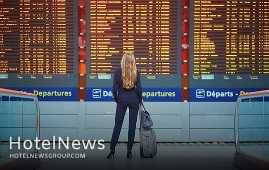
The restart of international travel could be seriously delayed without worldwide reciprocal recognition of all approved COVID-19 vaccines, says the World Travel & Tourism Council (WTTC).The global tourism body, which represents the global private Travel & Tourism sector, has issued its warning following concerns tourists face being turned away at the borders because countries don’t have a common list internationally recognised and approved COVID-19 vaccines.This comes just days after a number of British holidaymakers, who had been administered the Indian Covishield batch of the Oxford/AstraZeneca vaccine, were rejected entry into Malta despite the drug being chemically identical to the UK-made vaccine.Over the past few weeks reports of holidaymakers facing obstacles to entry have been on the rise, with some even being prevented from boarding their flights to destinations.WTTC believes that once again, the lack of international coordination to agree on a list of approved vaccines, is creating yet another major stumbling block for the restart of international travel.This comes despite most vaccines have secured the approval of the World Health Organisation (WHO) or Stringent Regulatory Authorities (SRAs), such as the UK’s the Medicines and Healthcare products Regulatory Agency (MHRA) and the Food and Drug Administration in the US, and the European Medicines Agency (EMA).Reports of travellers being turned away because they have the ‘wrong’ vaccine batches or ‘unrecognised’ vaccines have fueled concern from consumers, deterring them from booking and thereby damaging the already struggling Travel & Tourism sector.The plea for reciprocal recognition for all vaccines and vaccine batches forms part of WTTC’s four new guidelines which are aimed at safely resuming international mobility and save the millions of jobs and livelihoods which depend on this sector, while kick-starting the global economic recovery.Virginia Messina, Senior Vice President WTTC, said: “Reciprocal recognition of all vaccine types and batches is essential if we are to avoid any further unnecessary and damaging delay to restarting international travel.“The failure of countries to agree on a common list of all approved and recognised vaccines is of huge concern to WTTC, as we know every day travel is curbed, more cash-strapped Travel & Tourism businesses face even greater strain, pushing ever more to the brink of bankruptcy.“We can avoid this by having a fully recognised list of all the approved vaccines – and vaccine batches – which should be the key to unlocking international travel, not the door to preventing it.“It will also give holidaymakers and travellers the confidence they need to book trips, flights and cruises, confident in the knowledge that their fully-vaccinated status will be internationally recognised.”WTTC says the restoration of safe international travel can be achieved by following its four guidelines.Through a combination of COVID-19 testing, vaccination, digital health travel passes and the use of health and safety protocols, such as wearing face masks, safe international mobility can resume while at the same time saving millions of jobs and livelihoods which depend on the sector and kick-starting the global economic recovery. WTTC’s fundamental guidelines to restore international mobility while safeguarding public health include: Appropriately reduced protocols for vaccinated travellers, including no need for testing or quarantine for those fully vaccinated. Global recognition for international travel of all vaccines authorised for use and deemed safe and effective by the WHO or by the WHO recognised SRAs.A data driven, risk-based and internationally harmonised approach to re-establishing freedom of movement, that is consistent across countries, easy to communicate and clearly understood by travellers.Global adoption of ‘digital health passes’ which enable travellers to easily obtain and verify their vaccination status, negative COVID test result or natural immunity from a previous infection. These must work with existing border control and travel operator systems accepted by all countries. Digital verification of a traveller’s COVID status prior to travel will avoid lengthy and unsafe queues in transport hubs and terminals.Continued implementation of high-quality health and safety standards throughout all areas of the Travel & Tourism sector, including continued adoption of the WTTC’s Safe Travel Protocols and Safe Travel Stamp, with the continued wearing of face masks in crowded and enclosed areas as well as on all forms of public transport. WTTC advocates the full implementation of these proportionate and responsible guidelines for travel during over the next few months, as many travel restrictions begin being eased as major travel markets begin to reopen.This is against the backdrop of a successful vaccination roll out, with a subsequent decrease in deaths, cases, and hospitalisations in many countries. However, variants will continue to be cause of concern as the world struggles to emerge from the effects of the pandemic.
Create: Jul 17, 2021 Edit: Jul 17, 2021 International News
Perched on top of a steep hill, Alamut Castle was once sheltering the followers of Hasan-e Sabbah (1070–1124), the spiritual leader of a heretical Ismaili sect that spawned the word ‘Assassins’. Alamut Castle is situated on the northeastern side of Gazor Khan Village in the environs of Alamut, Qazvin province. While approaching the village, visitors should pass for nearly half along a narrow road surrounded by cherry and pomegranate orchards, until a mass of gray-brown rock looms from distance with fortifications perched atop a summit. The access path to the fortress starts about 700m beyond the village square and requires a steep 25-minute climb via a stairway. Meaning “eagle’s nest”, Alamut is a geographic region in the western edge of the Alborz Mountain range, between the dry and barren plain of Qazvin in the south and the densely forested slopes of the Mazandaran province in the north. Sabbah’s rule over Alamut is shrouded in mystery and enigma; partly because most Ismaili records of the era were destroyed by the Mongols while the writings of their detractors survived. In the early 1930s, British-Italian explorer and travel writer Freya Stark described her exploration of the place in her book “The Valleys of the Assassins”. In her celebrated 1934 travelogue, she recounts her hike up to Nevisar with mules that "seemed to be standing on their hind legs." These days Alamut is something of a great day out. Visitors can leave Tehran first thing in the morning for Qazvin, weave across the Alamut's first ramparts a few hours later, and, heading up-valley, reach Gazorkhan in time for a late lunch. Most visitors -- virtually all Iranian -- regard the gorgeous mountain-rimmed valley as an idyllic weekend retreat. Villages and hamlets dot its floor and sides; cornfields and rice paddies occupy parcels of land between ravines, and irregular terraced plateaus ruffle the valley's picturesque undulating terrain. Qazvin was once the capital of the mighty Persian Empire, under Safavids, from 1548 to 98. It is a major tourist destination with a wonderfully restored caravanserai-turned-arts precinct, some quirky museums, and a handful of decent eating options. For most travelers, Qazvin is also primarily the staging point for excursions to the famed castle of “Assassins”
Create: Jun 20, 2021 Edit: Jun 20, 2021 Regional News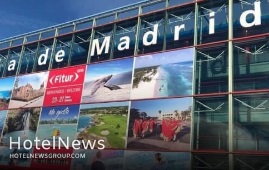
A select of Iranian travel-associated businesses and tour operators will promote handicrafts, traditions, and tourism potentials of the country at the 42nd FITUR tourism trade fair, which will be held in Madrid, Spain, from January 19 to 23, 2022. The Touring & Automobile Club of the Islamic Republic of Iran (TACI) as the representative of the Ministry of Cultural Heritage, Tourism and Handicrafts will be organizing Iran paravian at the tourism trade show, Mehr reported. A variety of exhibits, live performances, meetings, and workshops are amongst lineups of the Iranian exhibitors at FITUR 2022, which connects the industry with the inbound and outbound international markets. After hosting a post-pandemic recovery edition in the Spring of 2021, FITUR Madrid 2022 will resume its regular appointments at the beginning of the year, taking place at IFEMA – Feria de Madrid. Over the five days of the international tourism fair, professional participants will have access to unmissable commercial and business activities. In addition to being able to present their offers directly to the end customer, exhibitors can meet with over 150,000 trade visitors with significant purchasing power, according to organizers.
Create: Jun 19, 2021 Edit: Jun 19, 2021 Regional News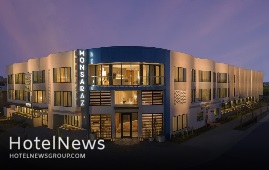
Today Point Loma welcomed its first new hotel in over a decade with the grand opening of The Monsaraz San Diego, Tapestry Collection by Hilton. Developed by Lamming Co. in partnership with Alliance Development, KNA Design, R&R Construction and JWDA architects, The Monsaraz celebrates Point Loma, often referred to as the place “where California began,” through its design, amenities and guest experience, offering a sea-centric haven—and an escape from day-to-day life—in the heart of one of San Diego’s iconic coastal towns. “We developed The Monsaraz with one goal in mind: ‘Create a place that enables our guests, their visitors, friend and the community to awaken their senses, be inspired to live in the moment and take time for a luxurious pause—an immersive experience that allows them to try something new, to relax, enjoy and celebrate one another.’” said Cameron Lamming, founder of Lamming Co. “We hope The Monsaraz leaves a welcoming legacy for Pt. Loma and San Diego, a legacy that brings together travelers from around the world and all walks of life in shared experience,” he said. The boutique hotel, designed to create an immersive and welcoming ecosystem with an evocative and effortless use of hand-hewn materials, custom handcrafted tiles, mid-century modern furniture and inspiring art features, features 92 guest rooms, including three suites, with distinct views of the rolling hills of Point Loma, the Bay and the Downtown skyline. The hotel’s design story stems from a story about young lovers meeting in Portugal for a magical weekend, and departing to go their separate ways, with a memory of the adventure and a new outlook on life to take back to their own homes. With that story in mind, hallways lead guests on an art-lined journey to the elegant and approachable comfort of each guest room, which feature bedrooms accented with blues that range from soft -to vibrant, grays and pops of wood. Reflecting the ever-changing nature of work-meets-play, mobile desks in all guest rooms make for a customized work and leisure experience; bathrooms feature blue ceramic patterned tile, inspired by classic Portuguese styles, with oversized walk-in showers and standout vanities. Guests and locals are invited to gather and connect in common spaces, including the hotel’s centerpiece: a 4,000 square-foot open-air courtyard accented by an enchanting live tree, locally painted and designed mural and living plant wall—the ideal destination for cocktails by the fire, weekend workouts, live music, art installations, pop-up cooking classes that enable local chefs showcase their talents, and Sunday “Fun-days” of all kinds. The courtyard is purpose-built—with a goal to create an inclusive atmosphere that fosters the curation of ideas, inspires new friendships and connections—and even helps make the world a better place. Guests may also find their way to The Monsaraz’s third floor “Hideaway”—the perfect place to take in the San Diego sunset with a cocktail in-hand. The Monsaraz is also home to Westerly Public House, a 60-seat Cali-Aussie concept that will showcase coastal cuisine inspired by both Aussie and SoCal beach culture. Westerly Public House’s menu embodies the coastal lifestyle with a strong focus on sustainability and locally sourced ingredients, with signature dishes including Mushroom Toasties, fish and chips, and peri peri chicken, plus a selection of classic, quintessentially “California” favorites and a dynamic wine and cocktail list. As part of the Tapestry Collection, The Monsaraz has implemented Hilton’s globally recognized CleanStay program. Hilton, in collaboration with RB, maker of Lysol and Dettol, and in consultation with Mayo Clinic, has launched an industry-defining standard of cleanliness and disinfection called Hilton CleanStay. In a first for the hospitality business, Hilton CleanStay is a rigorous system that incorporates RB’s trusted know-how and scientific approach to cleaning practices and product offerings. Experts from Mayo Clinic’s Infection Prevention and Control team are enhancing Hilton’s cleaning and disinfection protocols. Hilton CleanStay builds upon the already high standards of housekeeping and hygiene at Hilton’s more than 6,300 properties worldwide, where hospital-grade cleaning products and upgraded protocols are currently in use. The goal is to provide guests with assurance and peace of mind. The initiative creates a focus on cleanliness that is visible to guests throughout their entire stay – in their guest rooms, restaurants, fitness rooms and in other public spaces. Specific policies and procedures for The Monsaraz can be viewed online at TheMonsaraz.com. Reservations can also be booked online at a limited time opening best available rate starting at $180 per night.
Create: Jun 13, 2021 Edit: Jun 13, 2021 International News
Having unique tourism capabilities, Iran is a safe and desirable travel destination for visitors from around the world, Cultural Heritage, Tourism, and Handicrafts Minister Ali-Asghar Mounesan has said. He made the remarks during a meeting with Russian and Iranian tourism activists in Moscow on Monday. In recent years, Iran’s tourism sector has flourished because new branches of traveling, such as eco-tourism, health tourism, mining tourism, and agritourism, have all been gaining popularity, the minister said. Iran offers an impressive range of tourist attractions, including historical, cultural, and natural monuments, handicrafts, dense forests, towering mountains, roaring rivers, and beautiful deserts, while there are also over 700 museums that can be visited in different cities, he explained. Tourists can find the country to be one of the pocket-friendly destinations in the world, he mentioned. He also noted that some 400 hotels and over 2,000 eco-lodge units have been established across the country. Iran’s image in the world is being tarnished by the U.S.’s anti-Iran policy, but traveling to Iran could change this image for foreign tourists, he added. Mounesan on Monday signed an action plan to implement a bilateral visa-free agreement for tourist groups. The signing of the agreement, which emphasizes a waiver of visas for tourist groups, was due to the good relations between the two countries as well as the interest of Iranians in visiting Russia and the existing capacity in the country for cultural tourists and history buffs, he noted during the signing ceremony. He also expressed hope that the signing of the joint action plan, as well as the process of increasing vaccination and overcoming the corona crisis, would result in a growth of tourism between Iran and Russia. In 2017, Iranian President Hassan Rouhani and his Russian counterpart Vladimir Putin inked a visa-free agreement for tourist groups. A joint technical committee has been developing an action plan for the previously agreed visa-free travel arrangements since then, to put the agreement into effect. Based on the 2017 agreement tour groups of 5 to 50 people heading to [easternmost parts of] Russia from Iran or vice versa are granted a visa-free stay of up to 15 days. Earlier this month, Mostafa Sarvari, who presides over the tourism marketing and advertising office of the Iranian Tour Operators Association, announced many Russian tourists are eager to travel to Iran, recounting his Russian counterparts. “Many [potential] Russian travelers are motivated to visit novel and lesser-known destinations such as Iran that could be a safe and attractive destination,” he said. “According to Russian tourism experts, the feedback from Russian tourists who have traveled to Iran has been very positive, and its reflection, especially on social media, has caused a great deal of enthusiasm and interest.” According to Ebrahim Pourfaraj, who heads the Iranian Tour Operators Association, rounds of negotiations have been held between Iranian tour operators, travel marketers, and their Russian counterparts. “We’ve been commenced talks with some Russian travel agents to put Iranian destinations on their itineraries…. And the Iranian Tour Operators Association has also entered negotiations with Russian unions for outbound tours to attract more travelers from Russia.” Pourfaraj says the majority of potential Russian travelers are unaware of the vast tourist attractions that exist in every corner of Iran. “The fact is that Iran’s political and economic relations with Russia are considered as good, but this has nothing to do with attracting tourists because it is directly connected with the Russian people. It is the Russian people who must choose Iran as their destination.” Iran is taking proactive measures in line with the long-term goal of 20 million tourists by 2025.
Create: Jun 9, 2021 Edit: Jun 9, 2021 Regional News
The concept we want you to remember is ‘post-COVID stress disorder’ (PCSD), inscribing those guests who are emerging from the pandemic, and most likely vaccinated, yet still have some lingering fears about travel and their exposure to the virus. To quell these doubts, and turn a buck while at it, consider the idea of merchandising spa and wellness products within the guestroom. As background, it’s important to note that with all the lockdowns of 2020 and repeated messaging about physical distancing and self-isolation, new habits have solidified and have caused many of us to become more introspective or introverted, even as we opt to set sail and explore the world once again. Thus, customers will expect hotels to respond to this behavioral shift with new amenities in the guestroom so that we can all still have a great hotel experience but without strictly relying upon access to onsite (and potentially high contact) facilities to achieve this. Indeed, most of the major brands are already seizing upon this in-room wellness trend, like Accor’s All Stay Well or Hyatt Together which are both on-demand content services offering a range of exercise, meditation, mobility, sleep or yoga routines, often through partnerships with leading players in the wellness space. What we emphasize here is that if the big chains are bolstering their brand standards in this regard, then you cannot allow your property to get left behind. The beauty therein is that wellness is such a catchall term these days that you can get as creative as your budget permits to build a unique interpretation. While you may not have the resources to put together a full-fledged app, this shouldn’t stop you from exploring your options. Get your team together; make it a fun brainstorming exercise. Here are some ideas: Onsite fitness, meditation or yoga calls, kept within the new guidelines for viral safety via clearly marked attendee floor circles, strict online booking for contact tracing and the option of a video alternative for those who want to remain in their rooms Basic exercise equipment like yoga mats, bands, roam rollers or light weights, available in the room or at request, and always disinfected prior to delivery Healthy foods with nutritional tidbits, available as a surprise-and-delight welcome amenity, as part of a rejuvenated room service program or in the minibar, again abiding by sanitization rules In-room aromatherapy, which can encompass flowers, allergen-free materials, essential oil diffusers or branded scents Anything else that can bring the calming experience of an onsite spa into the guestroom such as beauty product or grooming samples Personal wellness consultations, conducted either in-person with physical distancing, or via your preferred platform for videoconferencing Mindfulness enhancers such as stimulating in-room artwork, hydrotherapy, daily haikus or thoughtful materials accessible via a phone, tablet or TV Undoubtedly your team can come up with a myriad of incredible recommendations that are tailored to your specific region if you give them a day or two. Importantly with all of these ideas listed above, there’s the possibility for an upsell by making these prearrival purchases, add-on services at any extra cost, bundling them into a rooms package or incorporating them into a higher product tier. Take heed, though, as right now these wellness amenities can be marketed or sold as a value-add for your brand. Similar to what we’ve seen with the rapid adoption of upgraded cleanliness and safety SOPs this past spring, these aspirational trends can have a way of quickly becoming the expectation. The more that chains embrace in-room wellness, the more likely these amenities are to be perceived as hospitality standards rather than noteworthy value-adds. To get started, it need not be something so elaborate and comprehensive. Simple is often better.
Create: May 17, 2021 Edit: May 17, 2021 Hotel Management
Blue Origin announced May 5 that it will fly people on its New Shepard suborbital vehicle for the first time July 20, and will auction off one of the seats on that launch. The company said that, after years of test flights without anyone on board, it will start flying people on New Shepard. The announcement took place 60 years to the day after the vehicle’s namesake, Alan Shepard, became the first American space on the suborbital Mercury 3 launch. The scheduled date of the flight is the 52nd anniversary of the Apollo 11 landing. The company hinted during its most recent test flight of the vehicle April 14 that it was ready to start flying people on the vehicle. The company used the flight to test procedures for future crew flights, including having company personnel, playing the role of customers, boarding the vehicle during prelaunch preparations, and also practicing exiting the vehicle after landing. “We have flown this vehicle 15 times and, after the last flight, we said, ‘It’s time. Let’s put people on board,’” said Ariane Cornell, director of astronaut sales at Blue Origin, in a call with reporters. The company did not disclose who would fly on the vehicle, capable of carrying six people, beyond that it will make one seat available to the public via an auction. The company will accept sealed bids through May 19, then go into an unsealed bidding phase, concluding in a live auction June 12. Blue Origin said the proceeds of the auction will go to an affiliated nonprofit organization, the Club for the Future, that supports STEM education activities. When Blue Origin announced April 29 that it would disclose its plans for selling the first seat on New Shepard, many expected it would formally unveil long-awaited plans to start selling tickets. The company has said little about its ticket sales strategy, including how much they would cost. Cornell declined to discuss how the company would sell tickets beyond this initial auction. “We don’t have details on the prices for future seats, and we will announce the details of how those future seats will be sold in the future, after this auction.” She added the company will take notes of the “most active bidders” in that auction for follow-up on future ticket sales. She also said that, after the July 20 flight, “we will have a couple more crewed flights before the end of the year.” While the company didn’t disclose details on ticket sales, the company is sharing more information on the spaceflight experience. Cornell said that those who fly on New Shepard will arrive at the company’s West Texas site four days before launch and undergo three days of training. That will include working in a mockup of the New Shepard crew capsule learning procedures for getting in and out of the vehicle as well as emergency protocols. Those who fly New Shepard have to meet a number of physical and other conditions, according to a terms and conditions document posted on the company’s website. That includes being at least 18 years old, weighing between 50 and 101 kilograms, being between 152 to 193 centimeters tall, and able to withstand 3g’s of acceleration during launch and 5.5g’s “for a few seconds” during reentry. Blue Origin didn’t disclose how many people signaled an interest in flying on New Shepard by signing up on its website in the last week to find out how they could buy tickets. “I can say that the website has gotten a workout in the last week,” Cornell said. “Obviously, we hope that is a good precursor to excitement and participation in the auction on June 12.” Loizos Heracleous, professor of strategy at the Warwick Business School, noted that there are about six million people worldwide with a net worth of at least $5 million, and thus likely in the addressable market for a flight like this. “For some it will be about bragging rights, for others it will be an experience of a lifetime,” he said in a statement about why people would be willing to pay a premium to fly on a suborbital vehicle. “In strict financial terms it might not seem a wise decision, but if it’s a small part of their disposable income or net worth, they might want to do it.”
Create: May 8, 2021 Edit: May 8, 2021 International News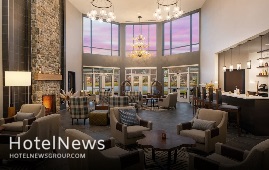
Saranac Waterfront Lodge, the only full-service waterfront property on Lake Flower in the village of Saranac Lake, officially opened its doors on May 1, 2021 to welcome travelers for the summer season. Inspired by the prominent philosophers, literary icons, artists, and performers who flocked to the Adirondacks in the early days as a reprieve from city life, Saranac Waterfront Lodge offers a nature-connected design and high-level guest service, along with an ideal location on the shores of Lake Flower’s Pontiac Bay. With 93 spacious guestrooms designed in an “Adirondack Modern” aesthetic, the hotel also offers three waterside dining options, an indoor heated pool and hot tub, lakeside firepit, 3,000 sq. feet of waterfront meeting and event space, and full lake access by kayak, canoe or motorboat. A private marina with 24 boat slips will open later this summer. Located within walking distance of downtown Saranac Lake, just a few miles from Lake Placid and 20 miles from Tupper Lake, Saranac Waterfront Lodge truly offers something for everyone, whether guests are searching for a quiet, restorative wellness retreat or an adventure-packed getaway. In celebration of the opening, Saranac Waterfront Lodge is rolling out a “Stay More, Save More” package that offers up to 20% off nightly rates. “Just in time for the summer season, we are thrilled to officially open our doors and welcome travelers to discover the beauty and adventure of the Adirondack High Peaks with a stay at Saranac Waterfront Lodge,” said Anura Dewapura, Managing Director, Saranac Waterfront Lodge. “With our waterfront location and our private marina, we look forward to welcoming locals to pull up their boat and enjoy our ‘dock and dine’ options, while providing our guests ample opportunities to explore the surrounding lake and mountains. With luxurious accommodations and comfortable spaces inspired by our natural surroundings, as well as the philosophers and artists who created our region’s storied past, there is no better place to relax and rejuvenate after a day of exploration.” Designed by Baskervill, Saranac Waterfront Lodge is a member of Preferred Hotels & Resorts and is the epitome of “lake meets mountain” style, with the outdoors woven into every aspect of the hotel. With soft, neutral colors and pops of plaid throughout, the interior spaces of the hotel provide a serene ambience, with artwork that pays homage to the surrounding flora and fauna of the area. Featuring pale greys and off-whites with forest green and deep navy accents, the hotel’s accommodations are designed to accentuate the views of the surrounding lake, mountains, and town. Offering either king or queen beds, Saranac Waterfront Lodge’s guest rooms average 335-square-feet in size. Those looking for even more space can reserve one of five suites that feature separate living rooms and walk-out balconies overlooking the lake. The hotel is pet-friendly, welcoming dogs up to 50lbs for an added fee, a portion of which is donated to the Tri Lakes Humane Society. Dining and drink options at Saranac Waterfront Lodge are plentiful. Overlooking Lake Flower, the hotel’s all-day dining venue, Boathouse, offers elevated gastropub fare and regional craft brews. Boathouse, which boasts a modern industrial design and a large, boat-shaped bar, serves breakfast, lunch, and dinner daily, as well as brunch on weekends. The menu is complemented by views of the lakeside, plus a seasonal patio for outdoor, waterfront dining. A more intimate dining experience is available at Harvest, Saranac Waterfront Lodge’s upscale venue set to open later this year with a concept that highlights locally sourced ingredients. Guests can enjoy coffee or cocktails in Navigator’s Lounge, the lobby bar that invites visitors to kick-back and relax will soaking in panoramic views of the Adirondack waterfront. With more than 3,000 square feet of event space, Saranac Waterfront Lodge offers a variety of options for weddings, meetings and social events, surrounded by the lake and mountains at every turn. Featuring one of the only four-season waterfront spaces in the region, the hotel offers event planning and customizable packages, with catering menus inspired by the local region and changing seasons. Health and safety features were designed into the hotel’s spaces, including the layout and furnishing of the bar, restaurant, and ballroom. The dining room of the Boathouse was designed to allow for natural physical distancing between tables, the hotel’s ventilation system uses the most updated technology available, and housekeeping incorporates BIOPROTECT™ antimicrobial technology in its “Peace of Mind” cleaning program.
Create: May 8, 2021 Edit: May 8, 2021 International News
At a time when many of the world’s events continue to be plagued by COVID-19, making plans even a week in advance may seem difficult, much less 10 years into the future. Nearly overnight, the dialogue shifted from “where to for lunch?” to “can you hear me?”. And as hotels emptied out and travel restrictions drag on, many may wonder, where lies the future of hotels? To answer this question, it is first important to recognize that the hotel sector does not exist as an individual silo, but one which forms part of a much wider network: the ecosystem of how we live and work. The cities in which we live today are a reflection of how humans have shaped our environments to fit our social and economic needs. For generations, urban agglomeration had been the standard of cities, and central business districts (CBDs) thrived as we commuted between living in one area and working in another. Accordingly, hotels have typically focused on serving transient international or regional visitors, primarily playing one of two roles: a place to sleep and meet during our business travels, or a place of respite for our leisure getaways. Today, rising interest in (semi-) permanent remote working and a greater desire to live outside of high-density urban areas may signal yet another impending change in the way we live and work. Could deurbanization or decentralization continue on this trajectory – and what would that mean for hotels? In a Cushman & Wakefield webinar, Richard Pickering, Chief Strategy Officer, EMEA and Borivoj Vokrinek, Strategic Advisory and Head of Hospitality Research EMEA from Cushman & Wakefield, traced the paths of how our societies and hotels have evolved, from their very beginnings to where they could be in the future. Blast from the past: The evolution of travel, from immobile to transient lifestyles Since the early days of civilization, the structure of our society has dictated where we lay our heads every night. When humans lived in self-sufficient tribes and settlements, there was no need to travel or sleep anywhere other than in our own beds; while as society progressed, business travel dominated as merchants travelled for trade. And then, with higher disposable incomes, more free time, rising globalization and the internationalisation of trade, there came the birth of mass leisure and business travel. Clearly, humans have become increasingly mobile – and the advancement of technology will only continue to push us towards this trend. Similarly, the role of accommodation providers has also evolved immensely with our changing social and technological landscape. From being a place for shelter and food to becoming a place to meet and then emerging as a provider of experiences, hotels have always evolved alongside our society and the cities in which we live. In today’s context, our ‘social awakening’ has brought rising calls for better work-life balance and a heightened desire to travel and ‘unwind’. To perpetuate this image, hotels have taken on an additional role: a promoter of one’s social status, driven by the growing prevalence of social media. Yet, this evolution will not end there – with our growing mobility, the role of hotels will only continue to expand to meet our transient needs. “There’s no virtual pivot for hotels,” Pickering emphasized. As our society and cities continue to evolve, so will hotels. ‘The variable impact (of COVID-19) on different sectors’ – C&W Webinar Part 1 of 2: Evolution of our cities and what it means for real estate, presented by Richard Pickering. Note: The relative positionings are for illustration purposes only. Swimming against the current – the rise of remote working Our cities of today, however, have been far from perfect, in fact, some may even argue that urbanisation in the developed world has become a myth. “In city centres, centralized demand, when combined with scarce supplies, pushes up rents for businesses as well as housing costs. [Meanwhile,] increasing city sizes means increasing commute times, which reduces free time and worsens pollution – all while our creaking infrastructure amplifies the penalties of distance,” Pickering suggested. It is unsurprising, therefore, to see an increasing number of digital nomads who choose to forego homeownership entirely to traverse the world in search of the much-revered triple-threat ‘office spaces’: stable Wi-Fi, multiple charging points and good coffee. In fact, as Global Workplace Analytics estimates that 25-30% of the workforce will telecommute multiple days a week by the end of 2021, some argue that ‘working from home’ may eventually become ‘work from anywhere’. And with a number of hotels already offering ‘work from hotel’ packages or even subscription services, it is evident that hotels are well-placed to capitalize on this trend. Forward to the future: Super-commuters in a decentralized world. As the idea of remote working with occasional commutes to the workplace gains wider acceptance from both employers and employees, it seems that we are at the tipping point of a new emerging trend: super-commuting. Super-commuters live in one city or country while their office is in another, commuting between the two from time to time – and this will have implications for hotels. “In the future, if more of the workforce is living in remote areas, it is actually likely that they will use hotel accommodation more frequently [for the days that they do travel to the office],” Vokrinek explained. Importantly, increased remote working does not mean a lesser need for meetings and social interactions – rather, the contrary is most likely true. “Not only will employees be living further away and have fewer interactions amongst each other, but clients will also be living outside of cities. So, there would be a need for more structured [and deliberate] meetings, not only on an international scale, but locally and regionally as well – and that will drive demand for meeting facilities in hotels,” Vokrinek suggested. In fact, not only will the role of hotels evolve, but there will likely be a greater need for hotels in the smaller communities that will form in these areas where such super-commuters will typically work from. “Historically, those towns and places were probably mostly residential, with limited [interest from investors] and limited amenities. However, if people will be living in those local hubs on a regular basis and commute less to the central core office, there will be a need for amenities in those local hubs and this will include hotels. Of course, the demand will be softer, so the hotels will probably be smaller. They will need to be more flexible; most likely a hybrid concept within mixed-use developments, [but there will be a need for them”] explained Vokrinek. ‘Hotels within a new eco-system of workspaces’ – C&W Webinar Part 2 of 2: The role of hotels as cities evolve, presented by Borivoj Vokrinek. The who and the why? Towards a new kind of work-life balance Although the notion of such super-commuters forming a considerable proportion of our workforce seems to lie somewhere in the distant future, with the prevalence of low-cost airlines and the advancements of technology, experts speculated, as early as 2014, that there could already be hundreds of thousands of super-commuters worldwide. This decentralization of the workplace is likely to pick up not only because of our increased mobility and higher level of comfort with remote working, but also due to the attractive benefits it may bring to both employees and employers. As Pickering explained, “In a digitally enabled world where distance no longer matters, […] I see a real opportunity for employees to derive labour arbitrage and live a better life” – even taking a small pay cut from a London salary to work from the Greek island of Kefalonia could be well worth the trade-off”. On the flip side, employers may also realize that sourcing the best (and/or cheaper) talent will no longer be bound by geographical borders. And with higher pressure on costs, especially in the short-term, employers too may find themselves increasingly attracted to the lure of allowing super-commuting. The shift, not death of business travel Many soothsayers have begun lamenting the death of business travel, citing the rise of video conferencing and growing realization that not all meetings call for an 8-hour flight and 2-hour layover. However, while the increased usage of video conferencing will undeniably replace some business travel, especially in the short-term, it would be hasty to presume that this would necessarily lead to a significant decline in business travel in the long-term. Rather, as we become increasingly accustomed to living a mobile lifestyle and working remotely, this emerging form of business travel will likely broaden the opportunities for hotels, through catering to the needs of a more decentralized workforce and their clientele. As Vokrinek further suggested, “Some part of the demand will become more regular and predictable, and this will open opportunities for more membership or subscription concepts and increase the importance of loyalty programmes.” Despite the short-term challenges faced by the hotel industry, it is evident that the role of hotels has constantly expanded to meet the new needs of the times – and there is no reason to assume that this time will be any different. Our society is undoubtedly becoming ever more transient, spending more time outside of our homes. But even then, we will still need places to eat, sleep, work and relax. With the rise of remote working, we will likely crave physical interactions and seek places to meet with others more than ever before. Therefore, while the current pandemic has had an indescribable impact on the hotel sector, its long-term implication is that it has catalysed the evolution of how and where we live and work, with hotels destined to play a much bigger role in our increasingly mobile lifestyles and new work ecosystems.
Create: May 6, 2021 Edit: May 6, 2021 Hotel Management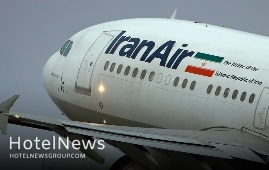
Iran has extended travel restrictions on flights to and from 15 countries due to a surge in the coronavirus disease, according to Iran Civil Aviation. The Islamic Republic has banned flights to India, Pakistan, France, Botswana, Brazil, Czech Republic, Iraq, Estonia, Ireland, Lesotho, Malawi, Mozambique, Slovakia, South Africa, and Zambia aimed to curb the disease, Meher quoted Hassan Khoshkhou, the director of Air Transport at the ICA, as saying on Wednesday. Moreover, the ban of selling air tickets to the cited countries has been declared to the travel agencies based on a decree issued by the National Headquarters for Coronavirus Control, the official explained. Iranian citizens without a negative coronavirus PCR test result are subject to medical screening and quarantine for 14 days at their own expense, while non-Iranian nationalities without the certificate are not allowed to enter the country. All passengers are subject to the medical screening on arrival, and if they are suspected of having the disease, non-Iranian nationalities will be quarantined at a place specified by the Health Ministry at their own expense and Iranian citizens will need to self-isolate for 14 days. The worldwide outbreak of COVID-19 has brought the world to a standstill, and tourism has been the worst affected of all major economic sectors. World tourist arrivals fell by 72% over the first ten months of 2020, according to data compiled by the World Tourism Organization (UNWTO) in December. Iran has also suffered the same fate as, according to available data, its foreign arrivals plunged 72% during the first eight months of 2020 when compared to 2019. New cases and mortalities In a press briefing on Wednesday, Iran's Health Ministry’s spokesperson confirmed 21,713 new cases of COVID-19 infection, raising the total number of infections to 2,459,906. She added that 1,923,081 patients have so far recovered, but 5,338 remain in critical conditions of the disease."During the past 24 hours, 434 patients have lost their lives, bringing the total number of deaths to 70,966," she added. So far, some 15,562,560 COVID-19 diagnostic tests have been performed in the country.
Create: May 1, 2021 Edit: May 1, 2021 Regional News
